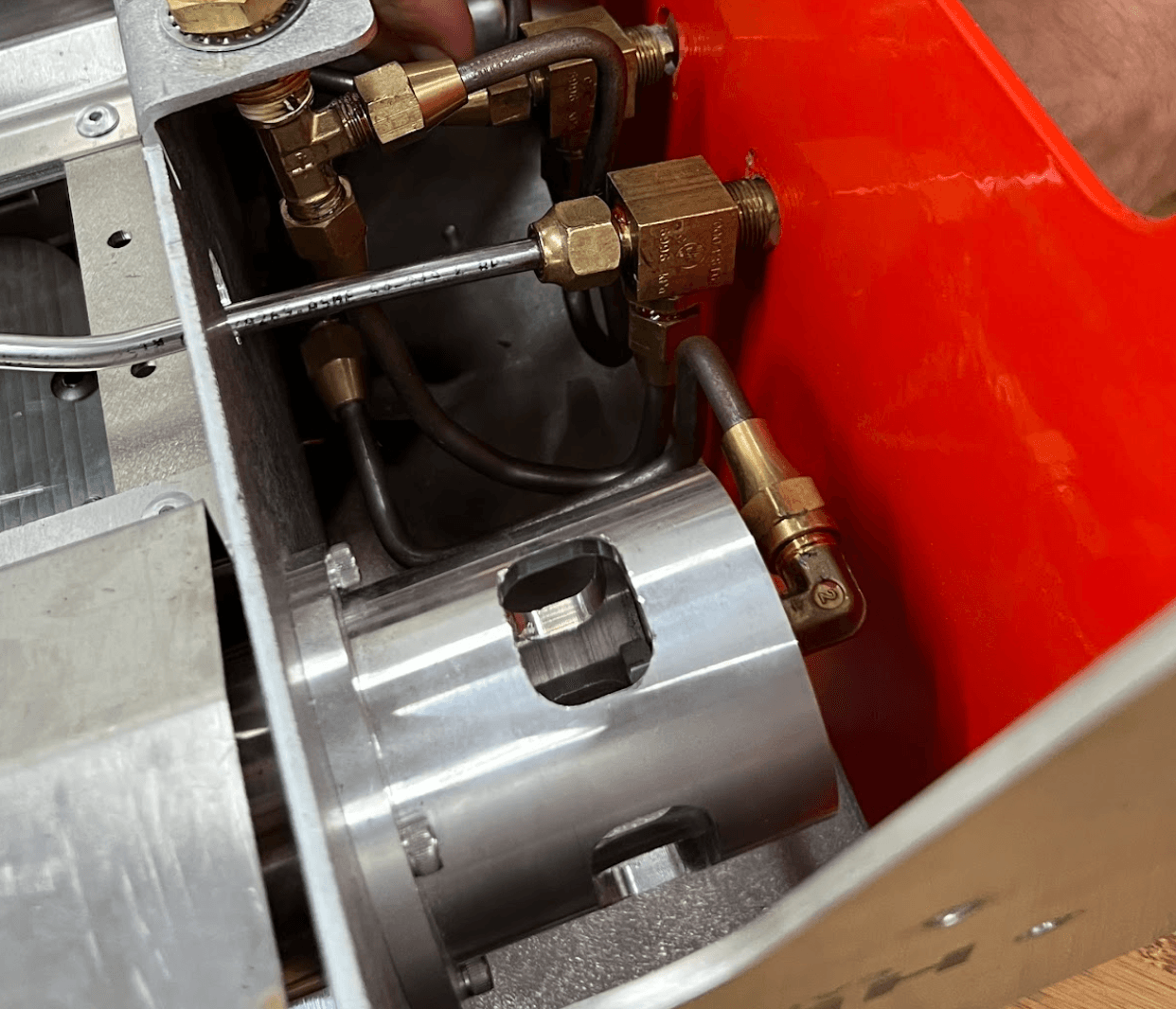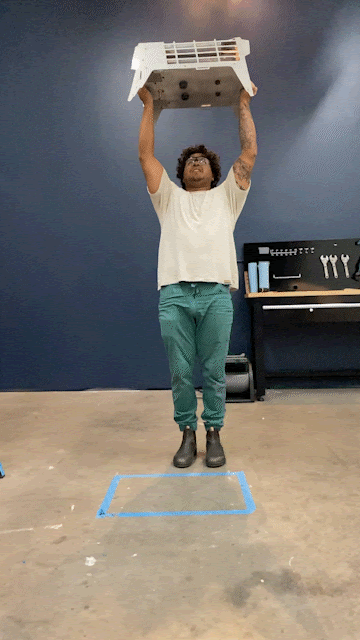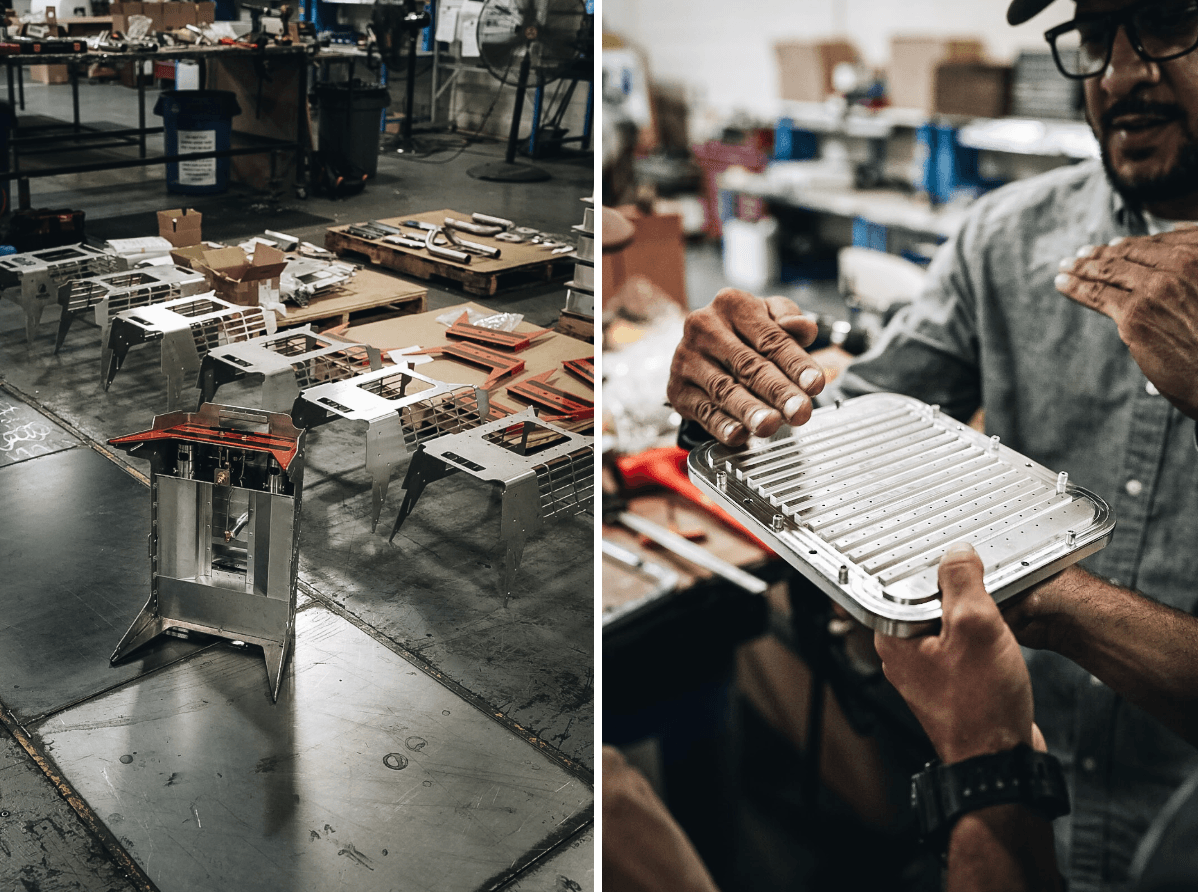Howdy folks!
The answer is... YES! The HOWL R4 Campfire is now officially legal to sell in all 50 states, and legal to use in burn bans up to Stage II.

As you know, it’s been a long and complicated battle. Not only did we invent a completely new technology, but it’s now proven to meet the rigorous ANSI Z21.97 standard for Outdoor Decorative Gas Appliances.
The HOWL is a campfire that’s actually hot, which means it is functional. Yet it still meets the international safety standards for flames-only propane fire pits, which are only intended to be decorative.
This is a giant step. It’s hard to overstate how enormous this is for the future of camping, and the future of our forests. But like every other milepost on this project, it was a real nail biter.
Here’s how it went down
It was our last day of testing at UL. For weeks we’d been getting regular updates: The multi-day endurance burn test? Passed. The torrential rain test? Passed. The tests for high winds, under-unit ground temperatures, operating temperature radius? Passed, passed, and passed.
None of this was surprising. We’d been running all these tests ourselves for months. We were confident we had this in the bag.
But on the last day of testing, they mentioned a test we'd never heard of
Oh yeah, it’s in the book. Buried in hundreds of pages of the ANSI Standard testing instructions, there’s one paragraph that mentions this test. In all our read-throughs we had simply missed it, so we had never run the test ourselves. That made us nervous.
The way this test works, you have to open up the HOWL, turn on the gas, and stick a torch inside to see what happens.
Normally, you just light the BarCoal burners from the exhaust end, since that's the only place you can access them without taking the unit apart. But for this test, the lab techs unscrewed a bunch of hex bolts, opened up the closed control box, and ignited the propane right at the BarCoal's jet heads – about six inches upstream of the burner mesh where the flames usually live.
From there, they let the jet heads burn for an hour. If their thermometers showed that the jet head holders stayed below 875ºF, we would pass. If not, we'd fail.

[a prototype jet head holder, made of 5-axis machined aluminum]
Now this test was only performed because our jet head holders were made of aluminum to save on weight. If those same holders were made of a higher melting point material like steel, then this test would not have been applicable.
We failed catastrophically
“Look guys,” the UL lab tech said over FaceTime, showing us his thermometer. “We hit almost 1000ºF, which is a failure. But there’s also this.” He panned the camera over to the HOWL. “The fittings on the gas lines expanded with the heat. You’ve got a gas leak creating a fire in the control box.”
Our shop fell silent. After years of single-minded pursuit, we were literally watching our hopes and dreams go up in flames.
“Are you guys still there?” said the technician.
We thanked him and said we’d call him back.
After a few minutes we shook off the discouragement and got to work, setting up the test to see if we could at least replicate the issue. We lit the propane at the jet head, and after 45 minutes, our temperature results were similar. But no gas leaks or fires occurred during our in-shop test.
As we mapped it out, the band-aid solution was obvious: all we had to do to pass certification was change the jet head holders from aluminum to steel. That would make us exempt from this test altogether. We called up UL, proposed a material change, and bam. They gave us the green light. WE WERE OFFICIALLY CERTIFIED!
Talk about whiplash. We were suddenly across the finish line we’d been striving toward for years. We should be elated. But it wasn't right.
We hadn’t actually solved the problem
Sure, the product was now legal. UL had just certified it for safety. Plus, our test unit in the shop didn’t develop a fire in the control box. And it was very unlikely that someone would take apart the product and try to light it from the inside in the first place. If they did, it would be a gross an intentional user error.
But still... what if? What if someone did manage to get a flame all the way up the tube and into the jet heads?
Regardless of whether the jet head holder was made of aluminum or steel – couldn’t the gas lines still potentially overheat and leak, just like they had in the UL lab?
That question haunted us
Rather than celebrating at the finish line, we put our heads down and ran tests. We needed to eliminate the risk of overheating the control box.
In our testing, we found that only some of our jet head assemblies would keep a flame standing at the jet head. It was these standing flames that heated up the control box, creating the potential for leaks.

With other assemblies, though, no matter how hard we tried, we couldn’t get a flame to stay lit at the jet head at all. Not even for a second. Any flame that tried to live there would immediately get blown out by the pressure of the jet.
So we studied the different assemblies, and it was clear: the ones with a standing flame had a part defect. The fuel line connection threadings were milled slightly wrong, just by a couple microns. It wasn't enough that you noticed when screwing them into place. But it was enough to allow a very tiny amount of fuel to leak through the threads. This tiny bit of gas created a standing flame, essentially a pilot light, which then continually re-ignited the nearby fuel jet and heated up the control box.
With the assemblies that had correctly milled threads, the threads didn’t leak, and therefore there was no standing flame.
Aha! Honestly, this is the exact reason we go through the certification process. And really, why every company should. UL’s rigorous testing protocol and highly-trained technicians caught a mistake that we didn’t, and that alerted us that we needed to switch parts vendors.
So now our fuel jet heads are being built by a machine shop that specializes in Swiss Screw Machining. This is a ludicrously precise process that’s used to make the gears in Rolex watches. Along with many other checks along the way, this precise machining ensures that we have a leak-proof thread fit.
With that issue resolved, the product development phase of the HOWL R4 is now finally, really, actually… complete 🤯
When can you buy one?
We’re ramping up production as we write. We even have an OFFICIAL HARD DATE for when the first production run will go on sale. Can you believe it?!
Now because we want this first run to be perfect, it's going to be a very small batch. We expect it to sell out fast, so if you want a HOWL, you’ll probably want to act quickly.
***MARK YOUR CALENDAR: THE FIRST DROP OPENS AT 7p ON SEPT. 19***

[Rain Testing]
All we can say at this point is… thank you. Thank for joining us on this mission to keep the forest and the campfire alive. Thank you for sticking with us through all the ups and downs of invention, productization, certification, and soon, manufacturing.
We would never have been able to push this wild idea this far without your encouragement and support. And this is only the beginning.
Keep carrying the fire,
— Randall, Alex, Kelly, Nicholas, and Diego




